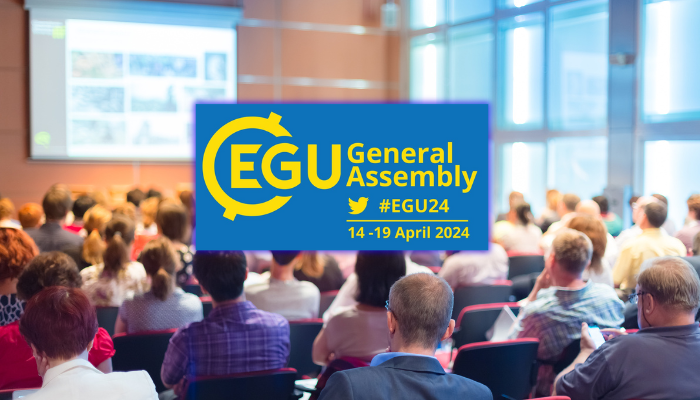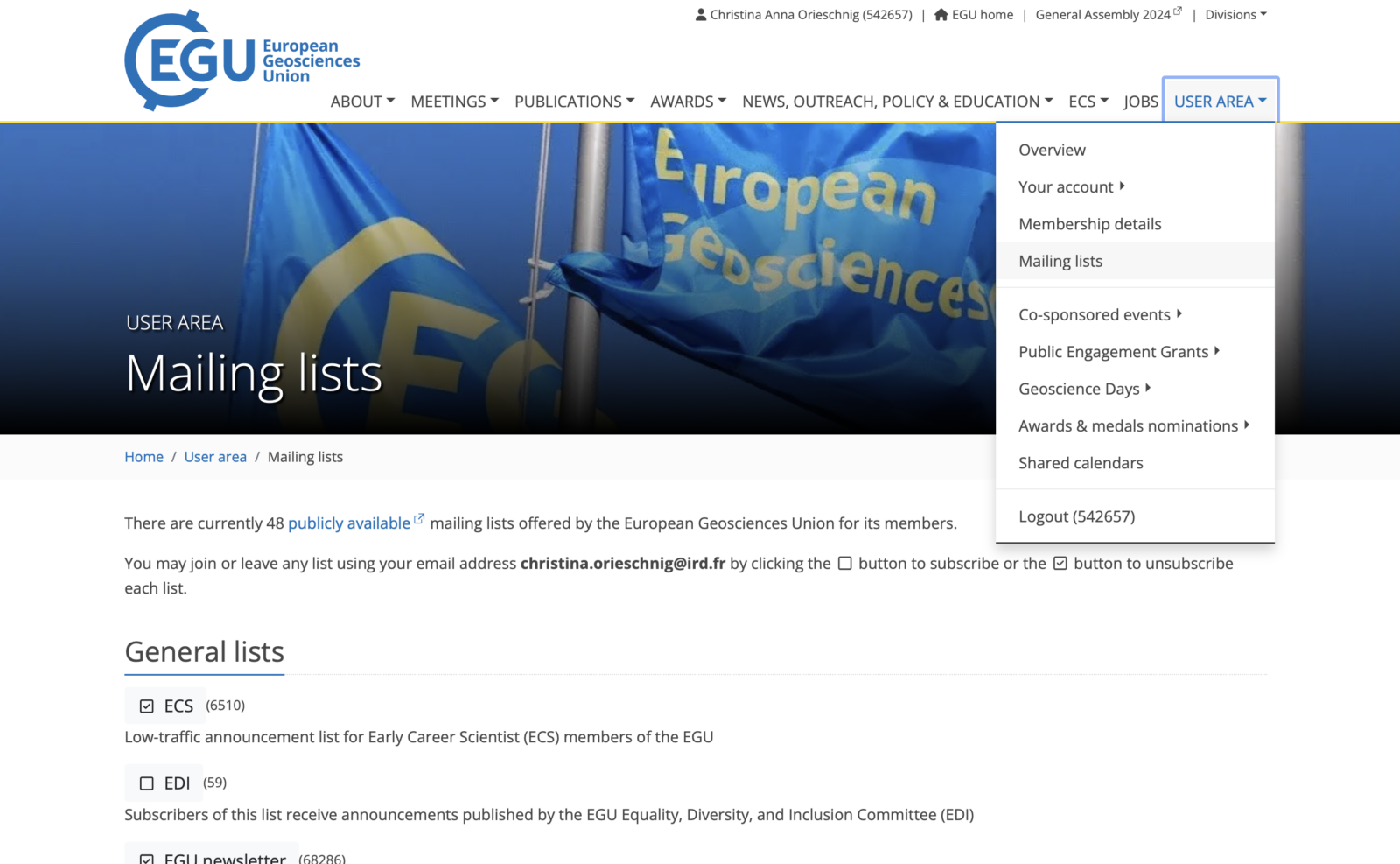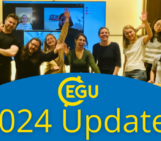
Going to the General Assembly (GA) of the EGU in Vienna is a unique experience. You’ll be surrounded by thousands of scientists in dozens of disciplines, from across the world. And you’ll get the chance to hear captivating presentations, meet amazing people, and discover new research approaches.
However, the GA can also get overwhelming. Vast in its layout and buzzing with attendees, the conference venue often resembles a maze, and there are usually so many interesting talks on the programme that you won’t know where to head next. Not to mention the stress of presenting your own work to an international audience.
So how do you brace yourself for all of this? Here’s how to prepare for EGU24, in five strategic steps.
1 – Prepare Your Presentation According to the Guidelines
First, you need to prepare your own presentation well in advance, according to the guidelines issued by the EGU.
In principle, there are three presentation types – oral, poster, and PICO presentations. In your letter of schedule, you might not have been assigned the presentation type you listed as your preference. That’s usually because session conveners received a multitude of fantastic abstracts and had to make tough decisions on who to assign one of the only 10 oral slots available per time block.
For oral presentations, you’ll have a total of 10 minutes – 8 minutes to present your work, and 2 minutes of questions. That means you should keep your presentation to 10-15 slides max. It’s crucial that you practice your presentation in advance and ensure you can stick to your time – most conveners will cut you off once your 10 minutes are over. In terms of presentation formats. PowerPoint and PDF are accepted. You need to upload your oral presentation at least 24h in advance of your session, using your EGU online space.
Posters are displayed in the main hall of the conference center, on the Red Level. Your poster will be displayed all day, but you only have to be present beside it during your assigned time block. You can print your poster either on-site or in advance. (One easy way of finding the conference center is to follow all the people carrying poster tubes on the underground!) The main advantage of poster presentations is that you have an entire time block to discuss your work with individual scientists, rather than being limited to a 10-minute slot.
PICO presentations, finally, have two components: A 2-minute oral presentation, followed by an interactive presentation at a touch screen, that allows you to interact with other scientists. For this, you’ll need to prepare two presentation files.
Need more information? Check out the EGU webinar on how to present your work in any format:
2 – Assemble Your Personal Programme
Next up, you need to assemble your personal programme for the General Assembly. Which presentations and events will you be going to during the week?
Start with fixed points. Your own presentation and those of your colleagues and friends take precedence, of course. After that, browse the programme and see what catches your eye. Which sessions look captivating? What relates to your own research? Which topics have you simply always wanted to explore? And which presenters would you like to talk to?
Think of all these questions when you scroll through the online programme. Pro-tip: If you log into your Copernicus account before you start scrolling, you can add sessions and even individual talks to your personal programme by clicking the little star on the right. Plus, Copernicus typically also releases a conference app that will help you navigate the programme and the conferences venue.
Once you’ve starred all the presentations that interest you, you’ll need to prioritise between them. Inevitably, there’ll be some overlaps!

Last year’s conference app. It offers an overview of the programme as well as floor plans, a newsletter, and access to your personal programme.
3 – Get an Overview of the Location
If you’re attending the GA, you’ve probably booked your accommodation in Vienna already. If you haven’t, try to find something near an underground stop on the line U1 (the conference center is at the U1 stop VIC/Kaisermühlen), the U4 between Friedensbrücke and Margaretengürtel, or the U3 between Zieglergasse and Kardinal Nagl Plaz. The U4 and U3 connect directly to the U1 and will be able to get you to the conference center speedily. (So does the U2, but there is currently construction on the line!)
Generally, Viennese public transport is reliable and comfortable. Check out the app WienMobil, which will tell you the exact times of all the undergrounds, buses, and trams you need to get to the conference venue. Heads-up: Your conference badge serves as a free public transport ticket in the core zones of Vienna during the entirety of the conference!
Arriving at the airport? The easiest (and cheapest) way to get to the center of town is a Railjet train by the ÖBB. Otherwise, there is also an aiport bus and the City-Airport-Train (CAT).
The conference center itself, the Austria Center, is vast and stretches across several levels, which are colour-coded. Check out its layout in advance, either online or in the conference app, and plan in a little extra time to find your way to the sessions. Even experienced conference-goers sometimes get lost.
4 – Keep Up With News Before and During the Conference
Another thing to keep in mind is to keep up with the latest conference news through email and social media – both before and during the conference.
Make sure you’re signed up to your Division email lists as well as the EGU newsletter. Plus, there is a daily conference newsletter that you can sign up for during the registration.
You can subscribe and unsubscribe to mailing lists in the User Area of your EGU account!

Subscribe to EGU mailing lists in your personal account!
Follow your division on social media and keep an eye out for any spotlights on social events and meet-ups! The Hydrological Sciences division is on Twitter/X, LinkedIn, and Instagram.
5 – Plan Breaks to Enjoy Vienna
Finally, when you’re preparing for the conference, be sure to factor in some breaks. Fascinating as it is, the General Assembly can get exhausting. Take at least one half-day to breathe and enjoy Vienna.
Voted one of the most liveable cities in the world, Vienna can offer architecture, culture, and cuisine. Visit the old imperial palaces or the numerous museums, go to see a classical concert in the Musikverein or the State Opera, or just sit down in one of the traditional cafés for some cake or coffee!

Impressions of Vienna. Image Credit: Christina Orieschnig
Conclusion
Coming to the GA is an unforgettable experience! By preparing for it in advance, you’ll be able to take full advantage of all the opportunities the conference offers, as well as of the many attractions of Vienna.
Want more information? Catch up on our webinar on how to prepare for the GA:




